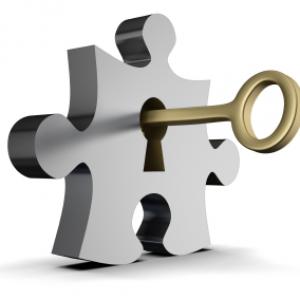When I’m preparing for my first job interview, help me to practice mock interviews or access tips on professional attire and etiquette, so that I can confidently present myself to potential employers.
Hannah, a diligent and ambitious 17-year-old, found herself nervously rehearsing her responses to potential interview questions while looking at her reflection in the mirror. She wanted to ace her first job interview at a local café, but she felt overwhelmed by the unknowns. Given that she did not have experience with job interviews, her tendency to rely on memories to help her take action was not going to work this time. In addition, she was not confident at all, feeling highly anxious about what she would say and do.
In this moment of apprehension, the areas of Hannah’s brain linked to decision-making and self-reflection were highly active. These areas that controlled her habitual activity were struggling to come to conclusions. This caused other areas that performed slow, deliberate considerations of actions to become active.
Sensing her anxiety, her older cousin, who had experience with job interviews, stepped in to offer guidance.
Hannah’s cousin initiated Step 1 of the Pathway, encouraging Hannah to consider her skills, strengths, and the interview’s significance. Together, they delved into questions like, “What unique qualities do you bring?” and “What do you hope to gain from this job?” to bring clarity to Hannah’s motivations.
Through Step 2, Hannah researched interview tips and professional dress codes, seeking resources that aligned with her desired outcome. She connected her need for preparation with the rewards of confidence and presenting herself professionally.
Step 3 led Hannah to formulate outcome statements. She aimed to refine her responses, practice mock interviews, and decide on an appropriate outfit and demeanor within the week—an achievable time frame.
However, as Hannah approached Step 4 to select what mattered most, she felt stuck. The multitude of tips and advice seemed conflicting, and she struggled to determine the best approach. Sensing her dilemma, her cousin helped her weigh the importance of each aspect—emphasizing the significance of authentic responses and professional presentation.
In Step 5, Hannah committed to a plan. She organized mock interview sessions with her cousin, researched common interview questions, and selected her outfit to reflect a balance of professionalism and comfort.
Step 6 involved organizing her action plan into a calendar, scheduling practice sessions, and preparing herself mentally.
Hannah initiated Step 7, executing her plan by practicing mock interviews, refining her answers, and experimenting with various interview outfits.
As Step 8 arrived, Hannah found herself reevaluating her progress. Reflecting on her initial outcome statement, she reviewed her mock interview performances and considered the impact of her preparations on her confidence and readiness for the actual interview.
Feeling unsure about her responses during the mock interviews, Hannah arrived at Step 9, contemplating modifications. Her cousin helped her analyze her weaknesses and suggested alternate approaches to her answers.
Finally, Hannah reached Step 10, sharing her experiences with friends who were also preparing for interviews. She advocated for thorough preparation and self-confidence when approaching job interviews, emphasizing the importance of a well-rounded preparation plan.
In the end, Hannah’s actual interview became the benchmark, measured against her initial nervousness and uncertainty. Her systematic preparation and commitment helped her approach the interview confidently, showcasing her skills and personality to the potential employer. She had developed new habits that would help her enter the work world.
